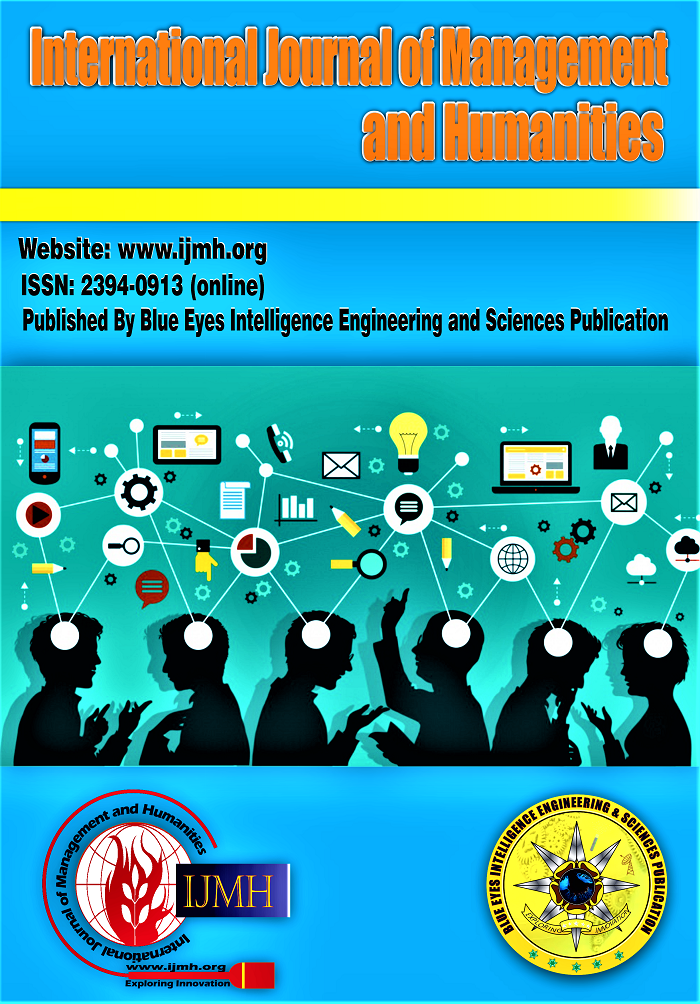"Unravelling Hierarchy in Japanese Workplaces an Exploration of Cooperation Between Japanese and Western Research Laboratories"
Main Article Content
Abstract
Effective global collaboration hinges on understanding cultural nuances, notably evident in Japan's organizational dynamics. While often perceived as hierarchical, Japanese structures defy simplistic categorization, as revealed by this qualitative study led by a French scholar. By interviewing Japanese and Western researchers, the research navigates through discordant perspectives, challenging conventional Western views. While some uphold a top-down structure, others advocate for a more egalitarian interpretation, reflecting Japan's nuanced reality. Central to this exploration is deference, shaping interactions and decision-making in Japanese workplaces through linguistic and non-verbal cues. This deference emphasizes mutual respect and collaboration rather than solely denoting power dynamics. Moreover, collective decision-making, a cornerstone of Japanese organizational culture, fosters ownership and commitment among team members, contrasting with Western hierarchical models. In summary, this research illuminates Japan's complex organizational dynamics, highlighting the importance of cultural reflexivity in fostering effective intercultural collaborations. Understanding nuances like deference and collective decision-making is crucial for navigating the complexities of global partnerships and overcoming misinterpretations.
Downloads
Article Details
Section
How to Cite
References
Egitim, Soyhan. “Challenges of Adapting to Organizational Culture: Internationalization through Inclusive Leadership and Mutuality.” Social Sciences & Humanities Open 5, no. 1 (January 1, 2022): 100242. p.2.
Ibid. p.5.
Hofstede, Geert. Cultures and Organizations: Software of the Mind: Intercultural Cooperation and Its Importance for Survival. New York: McGraw-Hill Professional, 2004. pp.41-43.
Ibid. pp.46.
Ibid. pp.57.
Brown, Steven, Brenda Hayashi, and Kikue Yamamoto. “Japan/Anglo-American Cross-Cultural Communication.” In The Handbook of Intercultural Discourse and Communication, 252–71. Wiley-Blackwell, 2012. p.260.
Idem.
Hooker, John. “Cultural Differences in Business Communication.” In The Handbook of Intercultural Discourse and Communication, 389–407. Chichester: Wiley-Blackwell, 2012. p.399.
Gheorghe, Caraiani, and Maduţa Gyongyver. “Ethics in Japanese Business Environment.” Romanian Economic and Business Review, no. 2 (January 2007): 45–52. p.45.
Wolf, Ruth. “Management Relations in the Work Culture in Japan as Compared to That of the West.” Innovative Journal of Business and Management, no. 2 (October 5, 2013): 116–22. p.118.
Sagi, Srilalitha. “‘Ringi System’ The Decision Making Process in Japanese Management Systems: An Overview.” International Journal of Management and Humanities (IJMH) 1, no. 7 (April 2015). p.11.
Egitim, Soyhan. Ibid. p.5.
Shaules, Joseph. Language, Culture and the Embodied Mind. Tokyo: Springer, 2019. p.14.
Ryo Takebayashi, 2022: Mondays: Kono taimurūpu, jōshi ni kidzuka senai to owaranai, lit. ’Mondays: This time loop will not end until the boss is made aware of it’
An encouragement to work hard or do your best, and never give up, no matter how hard the challenge.
Pavlov, A. P., Pavlov, P. A., Lvov, D. V., Novikov, A. S., Sinkovskaya, I. G., & Rakhinsky, D. V. (2019). Existential and Archetypal Architectonics of Social (Societal) Order. In International Journal of Recent Technology and Engineering (IJRTE) (Vol. 8, Issue 2, pp. 6148–6153).. https://doi.org/10.35940/ijrte.b3745.078219
Zarina, M. K. P., Dahalan, W. M., Yusop, M. Y. M., Nurain, J., Rasid, N. A., Yahaya, A. H., Ismail, A., & Rahman, F. A. (2019). Barriers to Speaking in English Among Maritime Students. In International Journal of Innovative Technology and Exploring Engineering (Vol. 8, Issue 12, pp. 5577–5584). https://doi.org/10.35940/ijitee.l4014.1081219
Rai, A., & Gour, K. (2020). Automatic Sign Language Gesture Recognition using Prewitt & Morphological Dilation. In International Journal of Engineering and Advanced Technology (Vol. 10, Issue 1, pp. 334–339). https://doi.org/10.35940/ijeat.a1884.1010120
Banerjee, N., & Giri, A. (2020). Technical Terms of Navya-Nyāya Language and its Methodology. In International Journal of Management and Humanities (Vol. 4, Issue 10, pp. 98–102). https://doi.org/10.35940/ijmh.j0978.0641020
Srivastava, K. R., Gupta*, R. K., & Khare, M. (2019). 5S Methodology Implementation in the laboratories of University. In International Journal of Engineering and Advanced Technology (Vol. 8, Issue 6, pp. 5079–5083). https://doi.org/10.35940/ijeat.f9555.088619





